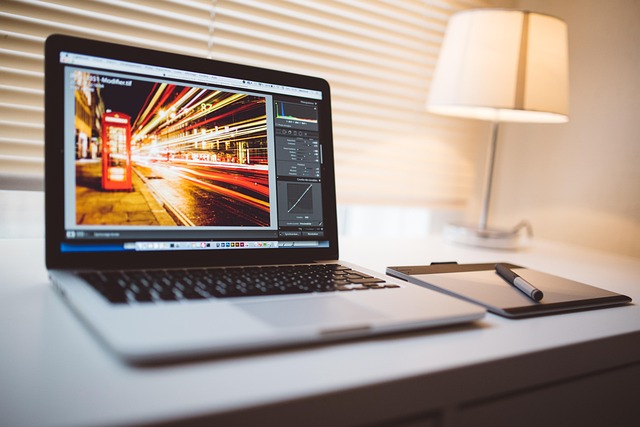When we talk about modern television production, the phrase “editing” usually conjures up images of cutting and splicing footage in a dark studio with a blinking computer screen. Yet, the heart of every polished broadcast lies in the subtle interplay between the editor’s creative choices and the display technologies that bring those choices to life. Over the past decade, advancements in TV monitors and visualization tools have reshaped the editing workflow, offering unprecedented color fidelity, real‑time collaboration, and immersive preview options that were once the realm of science fiction.
Color Accuracy: The First Step to Authentic Storytelling
Color is not a decorative element; it is the language that conveys mood, character, and narrative intent. Editors rely on monitors that can render a full range of color spaces—sRGB, Adobe RGB, Rec. 709, Rec. 2020, and DCI‑P3—to ensure that what they see during the editing process matches what the audience will see on various platforms.
- Wide Gamut Panels – Monitors with 99% DCI‑P3 coverage provide a richer palette for high‑end cinema and streaming content, reducing the risk of color shifts during post‑production.
- High Peak Brightness – HDR workflows require monitors capable of 1,000 nits or more. Editors can preview luminance changes accurately, avoiding surprises when content is delivered to HDR‑capable displays.
- Precision Calibration – Built‑in hardware calibration tools allow editors to lock in a neutral gray, consistent white point, and accurate gamma curves, ensuring color consistency across editing sessions.
Calibration Workflow for Busy Studios
In high‑volume post‑production facilities, calibration can become a bottleneck. A streamlined approach helps maintain color fidelity without slowing down the editing timeline.
“Calibration isn’t a luxury; it’s a necessity. Inconsistent color across sessions can break continuity, especially when multiple editors work on the same project.” – Senior Colorist, VisualFX Studios
- Set up a reference file with standardized color charts.
- Use the monitor’s built‑in colorimeter to create a profile.
- Apply the profile globally across the editing suite.
- Schedule quarterly recalibration to account for panel aging.
Real‑Time Collaboration: From Remote Teams to Shared Workflows
Editing has always been a collaborative craft, but the rise of cloud‑based services has turned global collaboration into a routine part of the workflow. Modern TV monitors now support dual‑display modes and split‑screen previews, allowing editors to compare different versions side by side or to overlay feedback from directors.
Software integrations enable live annotation on the screen, while high‑speed connectivity ensures that changes propagate instantly across a distributed team. This level of immediacy reduces iteration times and keeps creative decisions on track.
Visualization Tools that Enhance Narrative Flow
Beyond color, editors use visualization to understand pacing, rhythm, and visual impact. Innovations in timeline rendering and 3D preview tools have given editors a more intuitive way to tweak complex sequences.
- Dynamic Timeline View – Allows editors to zoom in on individual frames while still seeing the overall flow.
- Interactive Motion Graphics – Enables real‑time manipulation of titles and overlays, giving directors instant visual feedback.
- Depth‑Based Rendering – For projects utilizing 3D cameras, monitors with depth sensors let editors preview stereoscopic layers, ensuring proper eye‑comfort and immersion.
HDR and Beyond: Meeting the Demands of Ultra‑High‑Definition Content
High Dynamic Range (HDR) has become the standard for premium content. For editors, this means that the monitor must faithfully reproduce wide luminance ranges and contrast ratios. Additionally, new display technologies such as OLED and microLED offer perfect blacks and infinite contrast, which can be pivotal when editing content that relies on subtle light gradations.
Incorporating these technologies into the editing suite ensures that creative decisions—like adjusting shadow depth or highlighting bright reflections—translate accurately to the final broadcast.
Challenges of HDR Editing
While HDR provides stunning visuals, it also introduces new complexities for editors.
- Color Space Management – Editors must ensure that color grading remains consistent across different HDR formats (Dolby Vision, HDR10, HLG).
- Signal Path Integrity – Each component, from the editing workstation to the monitor, must support the full dynamic range to prevent banding.
- Workflow Compatibility – Legacy editing software may need plugins or updates to handle HDR metadata correctly.
Future Directions: Artificial Intelligence and Adaptive Displays
The next wave of monitoring technology is set to blend artificial intelligence (AI) with adaptive display features. AI algorithms can predict color shifts, automatically adjust white balance, or even suggest creative edits based on established style guidelines. Adaptive displays, on the other hand, can change their panel properties—such as brightness, contrast, or color gamut—in response to the content being edited, ensuring optimal viewing conditions at all times.
These innovations promise to reduce the cognitive load on editors, allowing them to focus more on storytelling and less on technical minutiae.
Implementing AI in the Editing Pipeline
Here’s a practical approach for studios considering AI‑enhanced tools:
- Start with an AI‑powered color grading assistant that offers baseline LUTs based on genre and lighting.
- Integrate AI-driven metadata extraction to automatically tag scenes, actors, or locations.
- Use machine learning to detect pacing inconsistencies and suggest cut points.
- Monitor AI suggestions with human oversight to maintain creative control.
Conclusion: Bridging Craft and Technology
Editing remains a craft rooted in human intuition and artistic vision. Yet, the evolution of TV monitors and visualization innovations has empowered editors to execute that vision with unprecedented precision and efficiency. From accurate color reproduction and HDR mastery to real‑time collaboration and AI‑driven assistance, the tools of the trade are continually reshaping the editing landscape. As display technologies advance—bringing higher resolution, greater dynamic range, and smarter interfaces—the boundary between what an editor sees and what the audience experiences becomes ever more seamless. The future of editing lies not in replacing the editor’s touch but in amplifying it, letting technology serve the storyteller’s purpose.




